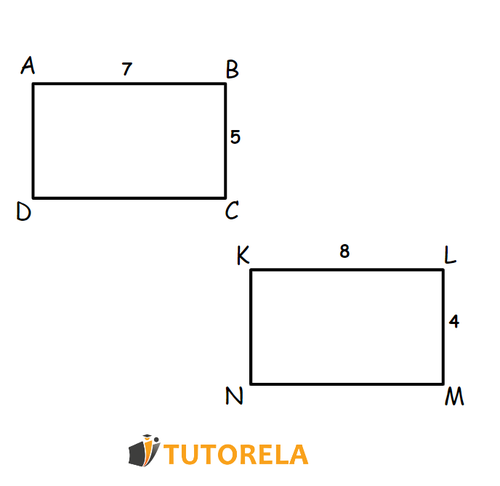Congruent rectangles are those that have the same area and the same perimeter.
Let's look at an exercise as an example:
Given the rectangles and , as described in the following scheme:

Observe the data that appears in the scheme and determine if they are congruent rectangles.
In the first rectangle we see the following:
That is, the perimeter is equal to and the area, to .
In the second rectangle we see the following:
That is, the perimeter is equal to and the area, to .
Both rectangles have the same perimeter, but their area is different.
Therefore, they are not congruent.